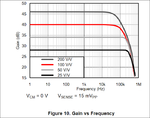c_mitra
Advanced Member level 6

Or is that creating a ground loop or might it cause some other ill effect?
... ... ...
I know such routing is not good but could it be just "OK" without inducing a lot of noise given the low current amplitude, does anyone have any thoughts/opinions about that?
I have not fully understood but I do not see any ground loop yet; ground loops are problem with high current circuits but in your case the high current path is not likely to be noise-sensitive.
Which part of the routing you think is not good?



